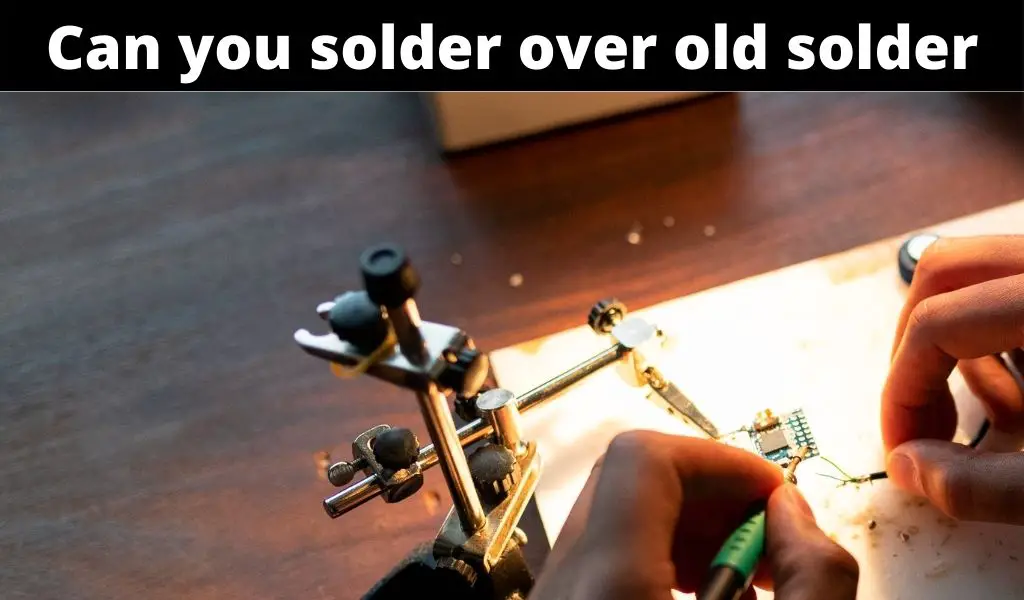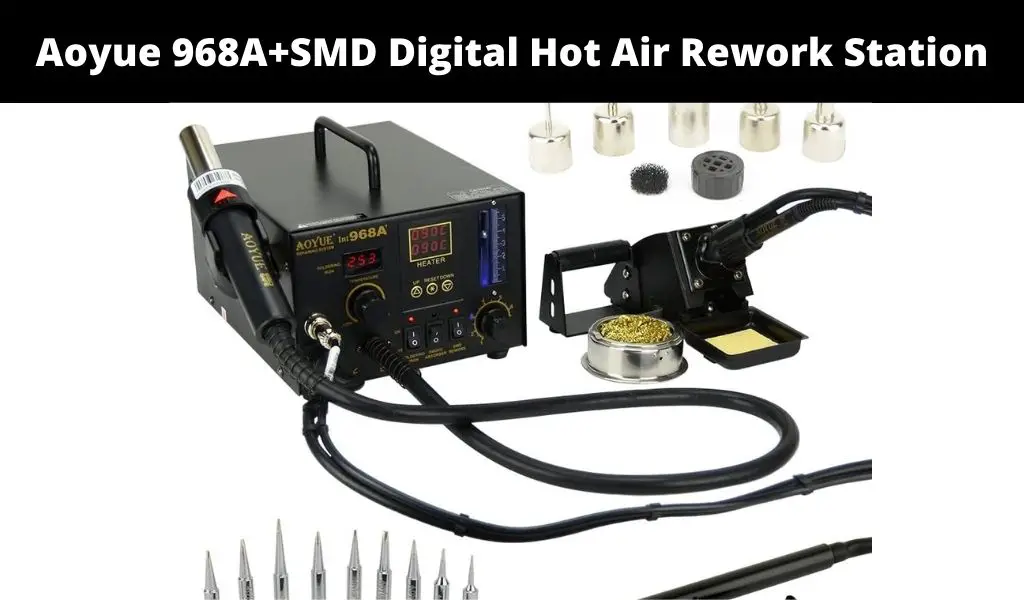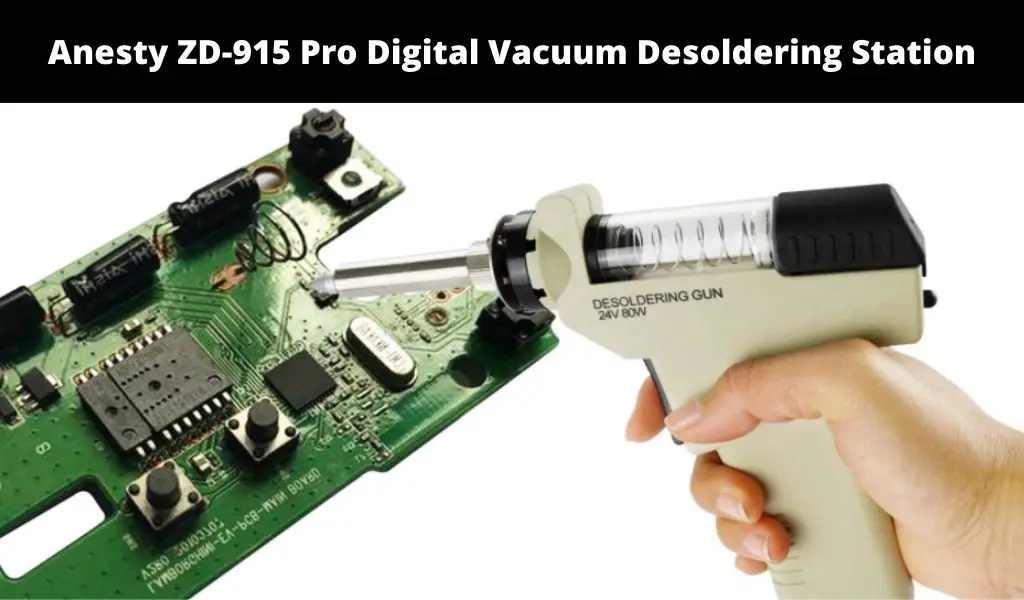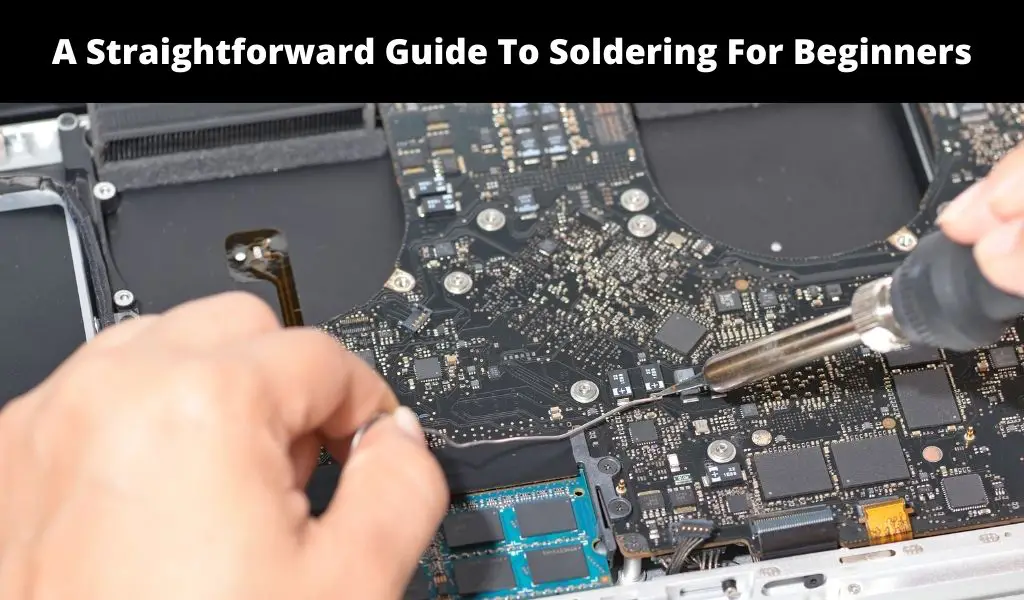Can You Remove Old Solder?
Yes. In fact, you should remove it completely before adding fresh solder to preserve the strength and integrity of the joint. To remove the solder, you can use solder wick or a desolder pump.
Can You Solder Over Old Solder?
You can solder over old solder, but it isn’t advisable to do so. Trying to solder over old solder won’t result in a perfect joint. You need to remove the old solder, clean the area, apply flux, and use fresh solder. While melting the old solder and attempting to add new solder can create a joint, it won’t be as strong. It’s therefore critical that you remove old solder first.
How Do You Remove Old Solder?
You can begin by heating the old solder using a heat gun or a soldering iron. Making contact between old solder and a hot soldering iron will melt the solder, which can then be removed with your solder wick or desolder pump.
Methods for Removing Solder
Removing Solder using Solder Sucker/Vacuum
This method requires soldering tools such as a soldering sucker or vacuum that melts old solder and sucks it out of the joint in question. The solder sucker has suction power capable of removing old solder as soon as it melts.
This method is simple and begins by melting the solder. Once the solder is flowing, press the button on the solder sucker to suck the molten solder. You may need to do it a few times to remove all of the solder.
Desoldering Using Solder Wick
As the name suggests, this desoldering method utilizes a copper braid for soaking up molten solder. To get the best result, you should use soldering braid with flux in it. The flux helps the solder flow more efficiently to the braid.
This desoldering method requires a soldering iron and copper braid. Before getting started, make sure that your soldering iron is clean from oxidation or debris. Then, select an appropriately sized copper braid. Generally, the width of the braid should match or be wider than the solder joint in question.
To start, place your copper braid on top of the joint and apply your hot iron to the top of the braid and heat up the joint. Once the joint is hot enough and the solder starts flowing, you should see it building up on the braid. Once the braid turns silver, move to a new section of braid to keep soaking up the solder. Continue removing until the joint is free of solder. Finish by lifting the copper braid and soldering iron together. Removing the iron first isn’t advisable as it may make the braid cool off and stick to the joint!
You can use some flux to substitute for low-quality copper braid. If you do this, ensure you put your flux before putting it on your joint. If the joint in question doesn’t have enough solder, you can add some new solder before removing everything.
Desoldering Using a Rework Station
Old solder can also be removed using a rework station. However, this method is only recommended for applications that won’t cause damage. Removing old solder from electrical components using a rework station isn’t a good idea as it may burn the circuit board and other electrical components.
This method is simple. It begins by heating your target area using your rework station. This should be done cautiously, ensuring there are no flammable items or components nearby. This can sometimes take longer to heat up than using a soldering iron.
Conclusion
Yes. You can choose to solder over old solder, but it isn’t advisable to do so since it compromises the integrity of the final joint. It’s better to remove the old solder first. Luckily, there are many desoldering methods discussed above you can use with ease.
FAQs on Desoldering (Removing Old Solder)
Can you reuse old solder?
Yes. However, it’s not recommendable to do so since it may contain impurities that will compromise the integrity of your joint. If the application in question isn’t sensitive, old solder can be reused.
What Material Absorbs Solder?
A copper braid or solder wick are perfect examples of materials that can soak up unwanted molten solder. Copper braid is sold in coils braided together using wire strands. Since copper conducts heat perfectly and molten solder is drawn to heat, heating up the copper braid sucks up the molten solder off the target area.
Can Old Solder be Removed Without Using Flux?
YES! Flux isn’t a must when soldering. However, you need something else (apart from flux) to get rid of the oxides that may be present on your metal workpieces; otherwise, you risk damaging your surface.
What Acid Will Dissolve Solder?
You can use concentrated acid to remove solder. Hydrochloric and nitric acids can dissolve solder completely. However, the application in question shouldn’t be affected by corrosion. Alternatively, you need to be extremely careful.






